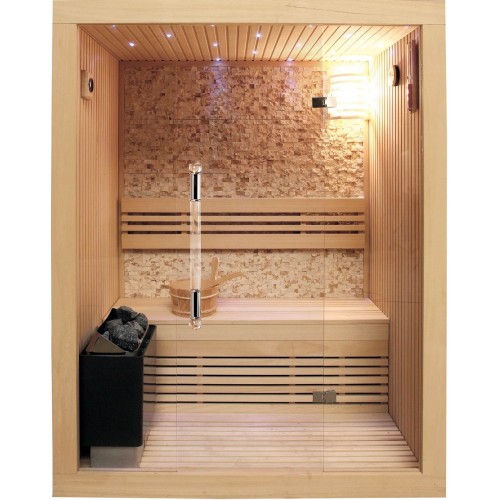Traditional Sauna Can Be Fun For Everyone
Traditional Sauna Can Be Fun For Everyone
Blog Article
Traditional Sauna Fundamentals Explained
Table of ContentsThe Best Guide To Traditional SaunaHow Traditional Sauna can Save You Time, Stress, and Money.Getting The Traditional Sauna To WorkThe Single Strategy To Use For Traditional SaunaExcitement About Traditional Sauna
A lot of the weight shed in a sauna is water loss and is re-gained upon rehydrating. Without a question sauna can be a crucial component of a healthy and balanced weight loss program. To consider the differences between typical and IR saunas, I will separate these right into verifiable, academic, and made distinctions.Hence, the best point in the saunawhich goes to the ceiling straight over the sauna heateris generally between 185 and 190 F. Claims that a typical sauna goes beyond 200 F is merely not real and not applicable for electric saunas marketed in the United States. The temperature for a far-infrared sauna is normally established in between 120 and 140 F; nevertheless, unlike the typical sauna, the goal in and IR space is not to attain a high temperature.
Because of this, the temperature difference is virtually irrelevant, considering that extreme sweating causes both sauna types, but the approach of heating the body is various. In an IR sauna the bather will really feel warm and will certainly sweat profusely, however at much lower temperature levels (Traditional Sauna). Therefore, if the goal is to spend longer amount of times in the sauna, the IR sauna is a great choice
When a conventional sauna has been properly heated, the sauna wall surfaces are warm, the air temperature level has actually attained set temperature and the rocks are very warmed. As an intriguing side note, the heated wall surfaces and the rocks are sending out far-infrared warm, combined with the heated air, to produce an "covering warm".
Getting My Traditional Sauna To Work

When the heat is achieved, the elements cycle on and off to preserve the high temperature level. The majority of standard sauna users enjoy pouring water over the rocks to develop heavy steam to raise sauna moisture levels. The advantages of putting water over the rocks include: making the space extra comfortable, moistening the nasal flows, and permitting the usage of aromatherapy by blending necessary oils with the water.

When the power gets in the body, it creates the body temperature level to boost and eventually results in sweating. In an infrared sauna it is essential for the emitters/heaters to remain on virtually frequently. Given that there is no mass of rocks to retain warm, the sauna will certainly cool down if the emitters shut down.
As pointed out over, the sauna bather in an infrared room wants to position himself before running emitters to obtain maximum advantage from the heat. The heating time for the two spaces can be really different, depending on exactly how the rooms are made use of. For a standard sauna, a bather ought to permit 30-40 minutes for the room to attain a desired temperature and to effectively pre-heat the rocks.
Get This Report on Traditional Sauna
A well constructed sauna will normally accomplish a temperature level of 150-160 F in concerning 30-40 mins. For hotter temperature levels, the space image source may need to warmth for a longer period.

Traditional saunas often tend to be bigger (thus make use of even more electrical energy) than infrared saunas, although standard saunas are definitely readily available in one and two individual sizes. For a two-person typical sauna, 5x6 or 5x7 size is most popular. The top bench can conveniently seat two or three people and is also enough time to lie down during the sauna session.
Rumored Buzz on Traditional Sauna
The typical cost per kWH of electrical power in the U.S. is roughly $0.11, so a 4.5 kW heater will cost about $.50 to compete one hour, if the heating system runs continuously for one hour. Typically a sauna heating unit will certainly compete 75% of the very first hour and 50% of subsequent hours on because the aspects cycle once the set temperature is achieved.

Lastly, there is a seldom reviewed difference in the social experience between the 2 areas. While our society has actually lost some of the social benefit of the typical sauna experience, it can be very socially satisfying (Traditional Sauna). From family time in the sauna, to heart-felt conversations with better halves, to sauna partiesthe typical sauna experience can cause intimate socializing
The 7-Second Trick For Traditional Sauna
A lot of higher end infrared you can try this out spaces consist of colored light treatment, sound systems and full-glass fronts.
Report this page